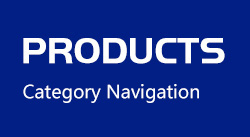Beam light series
Moving head light series
Movie light series 2
Par light series
Effect light series
Outdoor wall washer series
Video light series
Console Series 2
Laser light series
Special effects series
Follow spot light series
Console series
Accessories Series
Guangzhou Sixuan Lighting Equipment Co., Ltd.
Mobile: 15915836859
Phone: 020-36007995
Fax: 020-36007995
E-mail: 879676673@QQ.COM
Address: 3rd Floor, Block B, 2nd Road, Yuxin Village, Shimen Street, Baiyun District, Guangzhou
QQ Service Online:
Wechat QR Code
NEWS CENTER
Small and medium-sized packaging enterprises in environmental protection
Release Date: [2019/9/8 13:40:37] Total read [1829] Times
1. The 13-day EIA was not kept up, and Jinze Packaging was fined 24,000 yuan.
Wenzhou City Ecological Environment Bureau conducted a survey on Wenzhou Jinze Packing Co., Ltd. on June 27, 2019, and found that the company implemented the following actions: On June 27, 2019, the company did not report environmental impact to the environmental protection administrative department. In the evaluation document, the printing and packaging project was established in June 2019. The main project is under construction and has not been put into production.
The above behavior of Wenzhou Jinze Packing Co., Ltd. violates Article 25 of the Law of the People's Republic of China on Environmental Impact Assessment. “If the environmental impact assessment document of a construction project has not been approved by the examination and approval department according to law, the construction unit may not Construction starts."
The Wenzhou Ecological Environment Bureau decided to impose the following administrative penalties on the company:
The fine was RMB 10,000.
According to the industrial and commercial information, the office address of Wenzhou Jinze Packing Co., Ltd. is located in Xiaojiang Light Industry Industrial City, Pingyang County. It was incorporated on the Pingyang County Market Supervision Administration on June 14, 2019 with a registered capital of 5 million yuan. Business scope includes: paper products, plastic products, flexible packaging processing and sales.
2. The exhaust gas collection facility was not opened, and Jiexin Packaging was fined 100,000 yuan.
Recently, Ningbo City, Zhejiang Province announced to the public the third batch of environmental violation cases this year. Ningbo Haishu Jiexin Plastic Packaging Co., Ltd. was among them.
On June 11, 2019, the Haishu Branch of Ningbo Eco-Environment Bureau conducted an on-site inspection of Ningbo Haishu Jiexin Plastic Packaging Co., Ltd. located in Yuli Village, Gulin Town, Haishu District, Ningbo City. The inspection found that the exhaust gas collection and treatment facilities of the company's production facilities were not started, and the blown film exhaust gas was discharged into the atmosphere without treatment.
On July 29, 2019, the Haishu Branch of Ningbo Ecological Environment Bureau made an administrative punishment decision according to law, and imposed a fine of 100,000 yuan on the company.
Ningbo Haishu Jiexin Plastic Packaging Co., Ltd. mainly deals in flexible packaging products such as fully degradable pet garbage bags, household garbage bags, bone garbage bags, garbage bags and dog garbage bags.
3. No dangerous waste sign was set in the hazardous waste, and Kanglan packaging was fined 10,000 yuan.
On August 2, 2019, the Ecological Environment Bureau of Luoyang City, Henan Province issued a decision on the administrative penalty for Luoyang Kanglan Packaging Co., Ltd.
On July 12, 2019, the province's gas-related cross-special inspection team and the law enforcement officers of the Yibin District Management Committee inspected Luoyang Kanglan Packing Co., Ltd. and found that the company's hazardous waste temporary storage room was not set (suspended) as required. Waste identification.
The above behavior of Kanglan Packaging violates Article 52 of the Law of the People's Republic of China on the Prevention and Control of Environmental Pollution by Solid Wastes. “Containers and packaging materials for hazardous wastes and facilities and places for collecting, storing, transporting and disposing of hazardous wastes must be dangerous. The waste identification mark." The provisions constitute an environmental violation, and the Environmental Protection Agency imposed a fine of 10,000 yuan.
Henan Luoyang Kanglan Packing Co., Ltd. is a modern enterprise specializing in the production and sales of aluminum foil and PVC hard film for pharmaceutical packaging. It is one of the first batch of enterprises in China to be approved to register a class of pharmaceutical packaging materials. The company introduces domestically produced assembly line equipment and has three aluminum foil coating production lines. The annual production capacity (PTP) aluminum foil can reach 1000 tons, which can provide customers with high quality aluminum foil (plain foil, gold foil, single gold, double gold, monochrome foil). , multi-color foil, laser anti-counterfeiting foil and other rich high-end products).
4, do these "homework", no longer afraid of environmental attack
I. Implementing environmental protection policies
1. In line with national industrial policies and local industry access conditions, in line with the relevant requirements for eliminating backward production capacity.
2. Strictly implement the environmental impact assessment system and the “three simultaneous” system.
3. Dispose of the pollutant discharge permit according to law and discharge the pollutant according to the license content.
Second, improve equipment level
1. The enterprise should adopt the closed production process instead of the open production process, and it is preferred to adopt the continuous and automated production process instead of the intermittent production process to minimize the contact frequency between materials and the outside world.
2. Adopt advanced conveying equipment. The material pump of the shield pump, the diaphragm pump and the magnetic pump is used to replace the existing water jet vacuum pump to transport the liquid material. For special reasons, compressed air, vacuum suction, etc. are used to transport flammable, toxic and harmful chemical materials, and the exhaust gas should be collected and treated uniformly. Vacuum equipment such as Roots vacuum pumps and oil-free reciprocating vacuum pumps are preferred. If the process requires the use of a jet vacuum pump or a water ring vacuum pump, a reactor-type or tank-type closed vacuum pump should be used, and the circulating fluid should be equipped with a cooling system.
3. Optimize the way of feeding and discharging. The reactor should be fed with a bottom feed or with a dip tube. The top added liquid should be piped to the wall. The feeding and discharging should be provided with a sealing device or a closed area. If it is not sealed, the negative pressure should be used. Collected to the exhaust gas treatment system for processing.
4. Improve the efficiency of condensation recovery. The solvent should be multi-stage gradient condensation method in the distillation process to improve the recovery efficiency of the organic solvent, and preferably use high-efficiency heat exchange equipment such as spiral wound tube type or plate type condenser.
5. Adopt advanced centrifugal and pressure filtration equipment. In addition to special process requirements, enterprises should replace open-open centrifuges with closed centrifuges, multi-functional integrated filter presses, and dark-flow plate and frame filter presses. The mother liquor tail gas contains flammable and toxic and harmful components. Collect and process.
6, using advanced drying equipment. Enterprises should use closed drying equipment or advanced drying equipment such as flash dryers and spray dryers. The volatile solvent generated during the drying process needs to be condensed to recover the active ingredients and then connected to the exhaust gas treatment system. The presence of odor pollution should be effectively treated.
7. Standardize the storage of liquid materials. Chemical (oil-containing) storage tanks should be equipped with a recovery system or an exhaust gas collection and treatment system. In the process of loading and unloading volatile acid and lye storage tanks, the tail gas should be absorbed by falling film or packed tower. The exhaust gas should be absorbed by multi-stage water seal.
8. Promote water-saving production process. In addition to the special process requirements, the material washing is preferably carried out by a countercurrent rinsing process to encourage the cascade use of the sewage.
Third, the factory production environment
1. According to the actual situation, the ground of the production workshop shall adopt corresponding anti-seepage, anti-leakage and anti-corrosion measures. The workshop shall implement dry and wet separation. The plant area must fully implement the “two-way”, that is, hardening of the road site and greening in other areas.
2. There is no leakage and leakage at the production site, and the environment is clean and orderly.
3. The ground of the tank area and the general waste collection site shall be treated with hardening and anti-seepage treatment, and surrounding cofferdams shall be built. Generally, waste collection measures shall be taken at the waste collection sites. 4. All kinds of pipelines in the plant area should be clearly set up, the pipeline layout should be clearly installed, and they should be arranged in rows or columns along the wall or column, and laid in parallel.
Fourth, wastewater management
1. Implement rain and sewage diversion. The initial rainwater collection pool specification meets the volume requirement of the initial rainfall; the wastewater collection plant establishes a wastewater collection tank separately, and the collected sewage is pumped to the enterprise's total wastewater collection tank through an overhead laying pipeline; the cooling water passes through The closed pipeline laid overhead is recycled; the rainwater collection system uses open trenches. All trenches and pools are concrete-concrete and have anti-seepage or anti-corrosion measures.
2. Disposal of production wastewater and initial rainwater. Enterprises that self-treat and discharge wastewater should establish wastewater treatment facilities that are compatible with production capacity and types of pollutants. The wastewater treatment facilities operate normally and can meet the discharge standards. Wastewater takeover enterprises must establish pretreatment with production capacity and pollutant types. The facilities and pre-treatment facilities are in normal operation and can stably meet the take-over standards. Enterprises that are entrusted with waste water must sign an agreement with qualified units, complete the procedures for approval and transfer, and establish a commissioned disposal account.
3. Disposal of domestic sewage. For enterprises with takeover conditions, domestic sewage must be taken into the sewage treatment plant; enterprises that do not have the conditions for takeover should be disposed of according to regulations.
4. Discharge port setting. In principle, each company is only allowed to set up a sewage discharge port and a rainwater discharge port, and set up sampling monitoring wells and signs. The sewage discharge port should meet the requirements of standardization and rectification, so that “one obvious, two reasonable and three convenient”, that is, the environmental protection mark is obvious, the sewage outlet is set reasonably, the sewage discharge is reasonable, the sample is easy to collect, the monitoring and measurement is convenient, and the public participation and supervision are facilitated. The units that meet the requirements of Article 4 of the Interim Measures for the Supervision and Administration of Industrial Pollution Sources Automatic Monitoring System of Jiangsu Province shall install automatic monitoring equipment for major pollutant discharges as required, and network with the monitoring center of the Environmental Protection Agency. The rain drain should use regular open trenches and install emergency valves.
V. Waste gas management
(1) Exhaust gas collection and transportation
1. The collection of exhaust gas should follow the principle of “collecting all receivables and collecting quality”. The exhaust gas collection system should be designed according to factors such as gas properties and flow rate to ensure exhaust gas collection.
2. For equipment that produces fugitive dust or harmful gases, measures such as containment, isolation and negative pressure shall be taken.
3. The polluting gas should be collected by the gas collecting system of the production equipment as much as possible. The exhausted gas should be surrounded by or close to the pollution source when collecting the gas (dust) cover, reduce the inhalation range, and facilitate the collection and control of pollution. Things.
4. The waste gas generated by the wastewater collection system and treatment facility unit (original pool, regulating tank, anaerobic tank, aeration tank, sludge room, etc.) should be sealed and collected, and effective measures should be taken to dispose of it.
5. The closed design of the solid waste (hazardous waste) storage yard containing volatile organic materials or obvious odor, and the exhaust gas is discharged after being collected and treated.
6. The polluted gas collected by the gas collection (dust) cover should be transported to the purification device through the pipeline. Pipeline layout should be combined with the production process, and strive to be simple, compact, short pipeline, and less space.
(2) Waste gas treatment
1. All production enterprises should select mature and reliable waste gas treatment process routes based on the comprehensive analysis of the amount of waste gas generated, the composition and properties of pollutants, temperature and pressure.
2. For high-concentration organic waste gas, condensing (deep-cooling) recovery technology, pressure swing adsorption recovery technology, etc. should be used to recycle organic compounds in the exhaust gas, and then assist with other treatment technologies to achieve standard discharge.
3. For medium-concentration organic waste gas, it should be recycled by organic solvent or thermal incineration technology after adsorption.
4. For low-concentration organic waste gas, when there is recovery &#118alue, adsorption technology should be adopted; when there is no recovery &#118alue, adsorption and concentration combustion technology, regenerative thermal incineration technology, biological purification technology or plasma technology should be adopted.
5. The malodorous gas can be discharged after purification by microbial purification technology, low-temperature plasma technology, adsorption or absorption technology, thermal incineration technology, etc., and does not affect the surrounding sensitive protection targets.
6. In principle, chemical enterprises that are continuously produced should be treated by recycling or incineration of combustible organic waste gas. The chemical enterprises that produce intermittently should be treated by incineration, adsorption or combined processes.
7. Dust exhaust gas should be treated by bag dust removal, electrostatic dust removal or bag dust removal as the core combination process. Industrial boilers and industrial furnaces and kiln exhausts are preferentially clean energy and efficient purification processes, and meet the major pollutant emission reduction requirements.
8. Improve the automation of waste gas treatment. The spray treatment facility can adopt liquid level automatic control instrument, pH automatic control instrument and ORP automatic control instrument, etc. The dosing tank is equipped with liquid level alarm device, and the dosing method should adopt automatic dosing.
9. The height of the exhaust pipe should be set according to the specifications. The height of the exhaust pipe should not be less than 15 hydrogen cyanide, chlorine gas, and phosgene exhaust pipe height should be no less than 25 meters. The inlet and outlet of the end treatment should be equipped with sampling ports and equipped with facilities for sampling. Strictly control the number of enterprise exhaust pipes, and similar exhaust gas exhaust pipes should be combined.
Sixth, noise management
Enterprises should use equipment with low vibration and low noise as much as possible, and the noise emission should meet the requirements of "Environmental Noise Emission Standard for Industrial Enterprises' Boundary" (GB 12348-2008).
Seven, solid waste management
1. Hazardous wastes are collected and stored according to their characteristics.
2. The ground of the hazardous waste storage site should be hardened and treated, and it should be protected from rain, anti-lift and anti-leakage. The leachate enters the collection tank through the diversion tank.
3. Hazardous waste storage signs should be set up with hazardous waste warning signs, and hazardous waste containers and packaging bags should be marked with hazardous waste.
4. Establish a hazardous waste management account. Record the hazardous waste storage, utilization and disposal, establish a hazardous waste management plan and report to the district environmental protection bureau for the record, register the hazardous waste, and truthfully declare the types of hazardous waste, production, flow, storage, disposal and other relevant information.
5. Hazardous wastes shall be entrusted to units with corresponding hazardous waste business qualifications to use the disposal, and strictly implement the hazardous waste transfer plan approval and transfer joint order system.
Eight, cleaner production
The production enterprise shall complete the clean production audit on time according to the requirements issued by the bureau every year to meet the requirements of the industry's clean production standards.
IX. Environmental emergency management
1. Establish and improve an emergency management system. Establish an environmental emergency management agency, establish an environmental emergency management system, and implement environmental emergency management personnel.
2. Prepare emergency plans for sudden environmental incidents in enterprises. Entrust a professional technical service organization to prepare a plan, and timely report to the environmental protection department on the basis of completing the internal evaluation and external evaluation.
3. Larger environmental risk enterprises should carry out environmental safety compliance construction work.
4. Implement environmental risk prevention measures. Standardize the construction of environmental risk prevention facilities, including emergency rescue pools, initial rainwater collection pools, production effluent discharge sluice gate valves, rainwater drain closure gate valves and hazardous chemical storage tank cofferdams, etc., to ensure that once a safety production event occurs, production Waste water, fire water, etc. are not in the factory area, and do not pollute the external environment.
5. Establish an environmental emergency materials warehouse. The emergency materials and equipment specified in the emergency plan must be in place, and a special warehouse should be set up, and a material warehouse management system should be established at the same time.
6. Conduct regular employee training drills. At least one environmental emergency knowledge training and emergency environmental incident emergency drills will be organized and archived at the annual level. Relevant account information and archival materials will be archived.
X. Standardize environmental management
1. Standardize the whole process of marking the construction of the facility, and mark the key nodes of the treatment facility with special symbols such as marking and drawing, so that the entire process of the management facility can be seen at a glance and the quantitative management of the facility can be realized.
2. The enterprise shall not dismantle, idle or close the pollution prevention and control facilities in violation of regulations, and ensure that the pollution prevention and control facilities operate stably and meet the standards. When the exhaust gas treatment facilities are stopped due to accident conditions or equipment maintenance, the company shall immediately take emergency measures and stop production in time, and report to the Environmental Protection Agency.
3. The environmental protection rules and regulations are complete, and a special internal environmental protection agency is set up to establish an enterprise environmental management responsibility system composed of enterprise leaders, environmental management departments, workshop leaders and full-time environmental protection personnel.
4. The relevant files are complete, and the daily wastewater, waste gas treatment facilities operation, dosing, power consumption and maintenance records, and pollutant monitoring accounts are complete.









